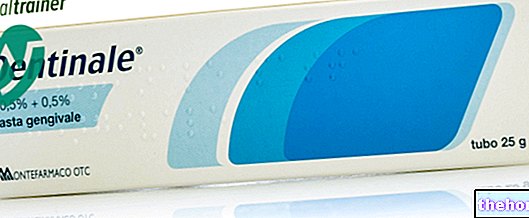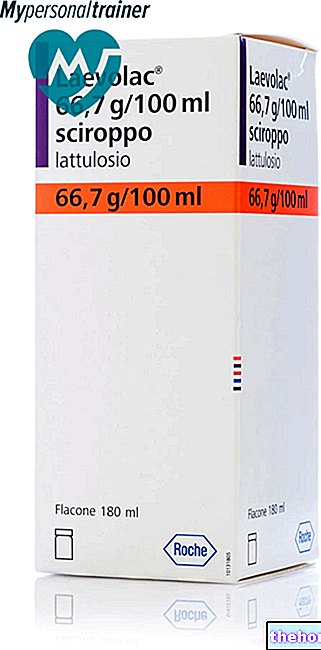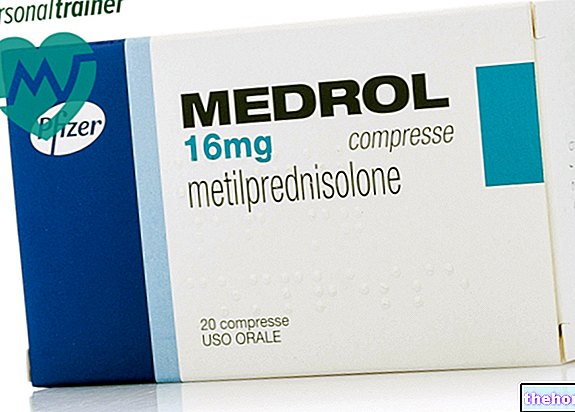Active ingredients: Neridronic acid
NERIXIA 25 mg solution for injection
NERIXIA 100 mg concentrate for solution for infusion
Why is Nerixia used? What is it for?
PHARMACOTHERAPEUTIC CATEGORY
Drugs for the treatment of bone diseases - Drugs that affect bone structure and mineralization - Bisphosphonates
THERAPEUTIC INDICATIONS
Adults
Imperfect osteogenesis.
Paget's disease of bone.
Algodystrophy.
Children (under 18 years of age)
Imperfect osteogenesis.
Contraindications When Nerixia should not be used
Hypersensitivity to the active substance or to any of the excipients or to other drugs of the bisphosphonate group. Severe renal insufficiency. Pregnancy and breastfeeding.
Precautions for use What you need to know before taking Nerixia
Renal function as well as serum calcium and phosphate should be monitored during treatment with neridronate.
Interactions Which drugs or foods may change the effect of Nerixia
Tell your doctor or pharmacist if you are taking or have recently taken any other medicines, even those without a prescription.
There are no studies on this. Caution must be exercised when administering bisphosphonates together with aminoglycosides because both active ingredients can lower calcium levels for prolonged periods of time.
Warnings It is important to know that:
Osteonecrosis of the jaw, usually associated with tooth extraction and / or local infection (including osteomyelitis), has been reported in cancer patients treated with regimens including bisphosphonates administered primarily intravenously. Many of these patients they were also treated with chemotherapy and corticosteroids. Osteonecrosis of the jaw has also been reported in patients with osteoporosis being treated with oral bisphosphonates.
Before starting treatment with bisphosphonates in patients with concomitant risk factors (such as cancer, chemotherapy, radiotherapy, corticosteroids, poor oral hygiene) the need for a dental examination with appropriate preventive dental procedures should be considered.
During treatment, these patients should, if possible, avoid invasive dental procedures. In patients who have developed osteonecrosis of the jaw during bisphosphonate therapy, dental surgery can exacerbate the condition. For patients requiring dental surgery, there are no data available to suggest that discontinuation of bisphosphonate treatment reduces the risk of osteonecrosis of the jaw and / or jaw.
The clinical judgment of the physician must guide the management program of each patient, based on the individual assessment of the risk / benefit ratio.
Fertility, pregnancy and breastfeeding
Ask your doctor or pharmacist for advice before taking any medicine. NERIXIA has not been studied in pregnant and lactating women; therefore, it is contraindicated in such conditions.
Effects on ability to drive and use machines
There is no data to suggest that NERIXIA affects the ability to drive or use machines.
Important information about some of the ingredients
Nerixia 25 mg contains 417.74 mmol (or 9.6 mg) of sodium per dose. To be taken into consideration in people with reduced kidney function or who follow a low sodium diet.
Nerixia 100 mg contains 1670.98 mmol (or 38.42 mg) of sodium per dose. To be taken into consideration in people with reduced kidney function or who follow a low sodium diet.
Dose, Method and Time of Administration How to use Nerixia: Posology
Imperfect osteogenesis
Adults
From 25 mg to 100 mg iv, depending on body weight, in a single administration by slow infusion, after dilution in 250-500 ml of 0.9% sodium chloride solution. The indicative dosage is 2 mg / kg of body weight every 3 months The total dose can be divided into im doses of 25 mg / day up to 4 consecutive days every 3 months.
Children (under 18 years of age)
The recommended dosage is 2 mg / kg body weight (maximum 100 mg) by slow intravenous infusion (at least 2 hours) every 3 months. Before administration dilute in 250 - 500 ml of 0.9% sodium chloride solution.
Paget's disease of bone:
The most commonly recommended dose is 100 mg i.v. per day, for 2 consecutive days, by slow infusion (at least 2 hours) after dilution in 250-500 ml of physiological solution. Lower doses may be sufficient for less severe forms of the disease; the overall dose can also be divided into IM doses. of 25 mg / day to be administered on consecutive days up to a maximum of 8 days. The opportunity to repeat the therapeutic cycle will be evaluated after not less than 6 months, when the therapeutic effect on bone turnover (serum alkaline phosphatasemia) of the first cycle is fully expressed.
Algodystrophy:
The recommended dose is 100 mg i.v. daily every 3 days for a total of 400 mg of neridronate, administered by slow intravenous infusion (at least 2 hours) after dilution in 250-500 ml of physiological solution.
Overdose What to do if you have taken too much Nerixia
Neridronate. Clinically relevant hypocalcaemia can be corrected by intravenous administration of calcium gluconate. In case of accidental intake of an excessive dose of NERIXIA, notify your doctor immediately or go to the nearest hospital.
IF YOU ARE IN ANY DOUBT ABOUT USING NERIXIA, CONTACT YOUR DOCTOR OR PHARMACIST
Side Effects What are the side effects of Nerixia
Like all medicines, NERIXIA can cause side effects, although not everybody gets them. Parenteral administration of Neridronate, as with other bisphosphonates, has been associated with an increase in body temperature. A flu-like syndrome with fever, malaise, chills and bone and / or muscle aches has been reported. No specific treatment is required in most cases and symptoms subside within hours or days. Hypocalcemia, hypophosphataemia. More rarely, dizziness, "rash" (skin eruptions) and urticaria have also been observed in clinical trials Intramuscular administration may be accompanied by slight pain at the injection site, which subsides after a few minutes.
Rarely, an unusual fracture of the femur may occur particularly in patients on long-term treatment for osteoporosis. Contact your doctor if you experience pain, weakness or discomfort in the thigh, hip or groin as this may be an early indication. of a possible fracture of the femur.
Compliance with the instructions contained in the package leaflet reduces the risk of undesirable effects.
If any of the side effects gets serious, or if you notice any side effects not listed in this leaflet, please inform your doctor or pharmacist.
Expiry and Retention
Expiry: see the expiry date printed on the package.
The expiry date refers to the product in intact packaging, correctly stored.
Warning: do not use the medicine after the expiry date shown on the package.
Medicines should not be disposed of via wastewater or household waste. Ask your pharmacist how to dispose of medicines you no longer use. This will help protect the environment.
KEEP THIS MEDICINAL PRODUCT OUT OF THE SIGHT AND REACH OF CHILDREN
Composition and pharmaceutical form
COMPOSITION
Nerixia 25 mg solution for injection
A 2ml vial contains:
Active principle
Sodium neridronate 27 mg, equivalent to 25 mg of neridronic acid.
Excipients
Sodium chloride; sodium citrate dihydrate; citric acid monohydrate; water for injections.
NERIXIA 100 mg concentrate for solution for infusion
One 8ml vial contains:
Active ingredient Sodium neridronate 108 mg, equal to 100 mg of neridronic acid.
Excipients
Sodium chloride; sodium citrate dihydrate; citric acid monohydrate; water for injections.
PHARMACEUTICAL FORM AND CONTENT
Solution for injection, 1 ampoule of 2 ml for intramuscular and intravenous use.
Concentrate for solution for infusion, 2 ampoules of 8 ml for intravenous use.
Source Package Leaflet: AIFA (Italian Medicines Agency). Content published in January 2016. The information present may not be up-to-date.
To have access to the most up-to-date version, it is advisable to access the AIFA (Italian Medicines Agency) website. Disclaimer and useful information.
01.0 NAME OF THE MEDICINAL PRODUCT
NERIXIA
02.0 QUALITATIVE AND QUANTITATIVE COMPOSITION
NERIXIA 25 mg solution for injection
One 2 ml ampoule contains 27 mg of sodium neridronate, equivalent to 25 mg of neridronic acid.
NERIXIA 100 mg concentrate for solution for infusion
One 8 ml ampoule contains 108 mg of sodium neridronate, equivalent to 100 mg of neridronic acid.
Excipients with known effects: sodium chloride; sodium citrate dihydrate.
For the full list of excipients, see section 6.1.
03.0 PHARMACEUTICAL FORM
Injectable solution.
Concentrate for solution for infusion.
04.0 CLINICAL INFORMATION
04.1 Therapeutic indications
Adults
Imperfect osteogenesis.
Paget's disease of bone.
Algodystrophy.
Children (under 18 years of age)
Imperfect osteogenesis.
04.2 Posology and method of administration
Imperfect osteogenesis
Adults
From 25 mg to 100 mg iv, depending on body weight, in a single administration by slow infusion, after dilution in 250-500 ml of 0.9% sodium chloride solution. The indicative dosage is 2 mg / kg of body weight every 3 months.
The total dose can be divided into i.m. doses. from 25 mg / day up to 4 consecutive days every 3 months.
Children (under 18 years of age)
The recommended dosage is 2 mg / kg body weight (maximum 100 mg) by slow intravenous infusion (at least 2 hours) every 3 months. Before administration, dilute in 250-500 ml of 0.9% sodium chloride solution.
Paget's disease of bone
The most commonly recommended dose is 100 mg i.v. per day, for 2 consecutive days, by slow infusion (at least 2 hours) after dilution in 250-500 ml of physiological solution. Lower doses may be sufficient for less severe forms of the disease; the overall dose can also be divided into IM doses. of 25 mg / day to be administered on consecutive days up to a maximum of 8 days. The opportunity to repeat the therapeutic cycle will be evaluated after not less than 6 months, when the therapeutic effect on bone turnover (serum alkaline phosphatasemia) of the first cycle is fully expressed.
Algodystrophy
The recommended dose is 100 mg i.v. daily every 3 days for a total of 400 mg of neridronate, administered by slow intravenous infusion (at least 2 hours) after dilution in 250-500 ml of physiological solution.
04.3 Contraindications
Hypersensitivity to the active substance or to any of the excipients listed in section 6.1 or to other drugs of the bisphosphonate group.
Severe renal insufficiency.
Pregnancy and breastfeeding.
04.4 Special warnings and appropriate precautions for use
Renal function as well as serum calcium and phosphate should be monitored during treatment with neridronate.
Osteonecrosis of the mandible and / or maxilla
Osteonecrosis of the jaw, usually associated with tooth extraction and / or local infection (including osteomyelitis), has been reported in cancer patients treated with regimens including bisphosphonates administered primarily intravenously. Many of these patients they were also treated with chemotherapy and corticosteroids. Osteonecrosis of the jaw has also been reported in patients with osteoporosis being treated with oral bisphosphonates.
Before starting treatment with bisphosphonates in patients with concomitant risk factors (such as cancer, chemotherapy, radiotherapy, corticosteroids, poor oral hygiene) the need for a dental examination with appropriate preventive dental procedures should be considered.
During treatment, these patients should, if possible, avoid invasive dental procedures. In patients who have developed osteonecrosis of the jaw during bisphosphonate therapy, dental surgery can exacerbate the condition. For patients requiring dental surgery, there are no data available to suggest that discontinuation of bisphosphonate treatment reduces the risk of osteonecrosis of the jaw and / or jaw.
The clinical judgment of the physician must guide the management program of each patient, based on the individual assessment of the risk / benefit ratio.
Atypical fractures of the femur
Atypical subtrochanteric and shaft fractures of the femur have been reported, mainly in patients on long-term bisphosphonate therapy for osteoporosis. These short transverse or oblique fractures can occur anywhere in the femur from just below the lesser trochanter to above. the supracondylar line. These fractures occur spontaneously or after minimal trauma and some patients experience pain in the thigh or groin, often associated with imaging findings and radiographic evidence of stress fractures, weeks or months before the onset of a stress fracture. complete femoral fracture. Fractures are often bilateral; therefore in bisphosphonate-treated patients who have sustained a femoral shaft fracture, the contralateral femur should be examined. Limited healing of these fractures has also been reported. In patients with suspected atypical femoral fracture, consideration should be given to discontinuation of bisphosphonate therapy pending an assessment of the patient based on individual benefit risk.
During treatment with bisphosphonates, patients should be advised to report any pain in the thigh, hip or groin and any patient who exhibits such symptoms should be evaluated for the presence of an incomplete fracture of the femur.
Important information about some of the ingredients
Nerixia 25 mg contains 417.74 mmol (or 9.6 mg) of sodium per dose. To be taken into consideration in people with reduced kidney function or who follow a low sodium diet.
Nerixia 100 mg contains 1670.98 mmol (or 38.42 mg) of sodium per dose. To be taken into consideration in people with reduced kidney function or who follow a low sodium diet.
04.5 Interactions with other medicinal products and other forms of interaction
There are no studies on this. Caution should be exercised when administering bisphosphonates together with aminoglycosides because both active substances can lower blood calcium for prolonged periods of time.
04.6 Pregnancy and lactation
NERIXIA has not been studied in pregnant and lactating women; therefore, it is contraindicated in such conditions.
04.7 Effects on ability to drive and use machines
There is no data to suggest that NERIXIA affects the ability to drive or use machines.
04.8 Undesirable effects
Parenteral administration of neridronate, as with other bisphosphonates, has been associated with an increase in body temperature.
A flu-like syndrome has been reported, with fever, malaise, chills and bone and / or muscle aches. In most cases, no specific treatment is needed and symptoms subside within hours or days.
Hypocalcemia, hypophosphatemia.
More rarely in clinical trials were also observed: dizziness, rash and urticaria.
Intramuscular administration may be accompanied by slight pain at the injection site, which subsides after a few minutes.
Post-marketing experience
The following adverse reactions have been reported during post-marketing experience:
• Musculoskeletal and connective tissue disorders
Rare: Atypical subtrochanteric and diaphyseal fractures of the femur (bisphosphonate class adverse reaction).
• Eye disorders
Frequency not known: anterior uveitis, episcleritis, conjunctivitis and eye pain.
Reporting of suspected adverse reactions
Reporting of suspected adverse reactions occurring after authorization of the medicinal product is important as it allows continuous monitoring of the benefit / risk balance of the medicinal product. Healthcare professionals are asked to report any suspected adverse reactions via the national reporting system. "address https://www.aifa.gov.it/content/segnalazioni-reazioni-avverse.
04.9 Overdose
No specific information is available on the treatment of overdose with neridronate.
Clinically relevant hypocalcaemia can be corrected by intravenous administration of calcium gluconate.
05.0 PHARMACOLOGICAL PROPERTIES
05.1 Pharmacodynamic properties
Pharmacotherapeutic group: drugs for the treatment of bone diseases - drugs that affect bone structure and mineralization - bisphosphonates.
ATC code: M05BA.
Neridronate belongs to the class of bisphosphonates, compounds that act on bone metabolism by preventing resorption, with a consequent decrease in bone turnover.
In vitro and in vivo studies have shown that neridronate inhibits bone resorption without modifying the mineralization process.
Clinical studies have shown that treatment with neridronate involves significant reductions in both resorption parameters, such as hydroxyproline and the N-terminal telopeptide of urinary type I collagen, and in alkaline phosphatase, an index of bone turnover. reabsorption undergo very rapid decreases, a few days in the case of parenteral administration, anticipating the reduction of alkaline phosphatase by a few weeks, which shows a slower and more gradual trend. The rapid inhibition of bone resorption causes a transient decoupling between the processes of neoformation and those of resorption; this state lasts until a new equilibrium is reached, with the adjustment of the new bone synthesis to a lower turnover level. The prevalence of osteosynthesis processes during the decoupling phase determines the reduction of the influx of calcium towards the extracellular environment and a temporary increase in the secretion of parathyroid hormone (PTH). The onset of secondary hyperparathyroidism allows to counteract hypocalcemia by increasing the synthesis of calcitriol and stimulating intestinal absorption of calcium. Furthermore, the increase in PTH decreases the tubular reabsorption of phosphates, thus decreasing the serum concentration.
05.2 "Pharmacokinetic properties
The pharmacokinetic characteristics of sodium neridronate were evaluated in rat plasma and urine after single intravenous administration of 10 mg / kg. The results of the study showed a maximum concentration (0.06 mg / ml) reached immediately after administration, followed by a rapid phase of reduction in plasma concentrations, due to the phenomena of tissue distribution and elimination. 31.7% of the drug was excreted in the urine during the 24 hours following administration.
In humans, slow intravenous infusions of 25, 50 and 100 mg showed clear linearity and proportionality between doses. Neridronate 25 mg is completely absorbed following intramuscular administration and the excretion profiles are comparable to those observed after administration of the same dose by i.v. infusion. Approximately half of the dose administered by i.v. infusion. or via i.m. it is excreted in the urine after each administration. The elimination half-life is approximately 7 hours.
No data are available in subjects with renal or hepatic impairment.
05.3 Preclinical safety data
Acute toxicity
Subacute toxicity
Following intravenous administration for 4 weeks, doses up to 2.5 mg / kg / day in rats and up to 20 mg / day in dogs were well tolerated.
Genetic toxicity
Neridronate was not mutagenic in the mutagenicity tests evaluated.
Local toxicity
Following intramuscular administration in rats, no signs of local tissue toxicity were found.
Carcinogenesis
Carcinogenicity studies have not been performed, given the absence of mutagenic effects of the drug, the chemical-physical characteristics of the product, and the evidence that the other bisphosphonates, currently used in therapy, did not show carcinogenic risks.
06.0 PHARMACEUTICAL INFORMATION
06.1 Excipients
Sodium chloride; sodium citrate dihydrate; citric acid monohydrate; water for injections.
06.2 Incompatibility
To avoid any incompatibilities, NERIXIA for intravenous infusion must be diluted in isotonic sodium chloride solution.
06.3 Period of validity
3 years.
After dilution in isotonic sodium chloride solution, the mixture obtained was stable for a period of 48 hours at 20 ° C.
06.4 Special precautions for storage
This medicine does not require any special storage conditions.
06.5 Nature of the immediate packaging and contents of the package
NERIXIA 25 mg solution for injection: a colorless neutral glass vial with pre-breaking ring, 2 ml, hydrolytic class I (Ph. Eur.).
NERIXIA 100 mg concentrate for solution for infusion: two colorless neutral glass ampoules with pre-breaking ring, of 8 ml, hydrolytic class I (Ph. Eur.).
06.6 Instructions for use and handling
No special instructions.
Unused medicine and waste derived from this medicine must be disposed of in accordance with local regulations.
07.0 MARKETING AUTHORIZATION HOLDER
ABIOGEN PHARMA S.p.A.
Via Meucci 36
Ospedaletto - PISA.
08.0 MARKETING AUTHORIZATION NUMBER
NERIXIA 25 mg solution for injection AIC n. 035268010
NERIXIA 100 mg concentrate for solution for infusion AIC n. 035268022
09.0 DATE OF FIRST AUTHORIZATION OR RENEWAL OF THE AUTHORIZATION
Date of first authorization: April 2002
Date of most recent renewal: April 2007
10.0 DATE OF REVISION OF THE TEXT
December 2015




























